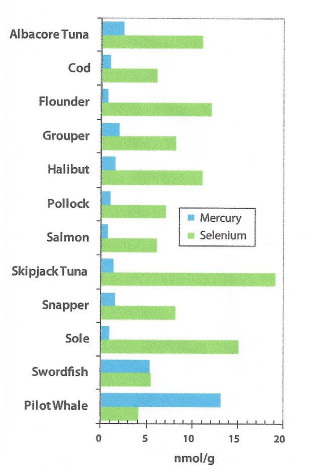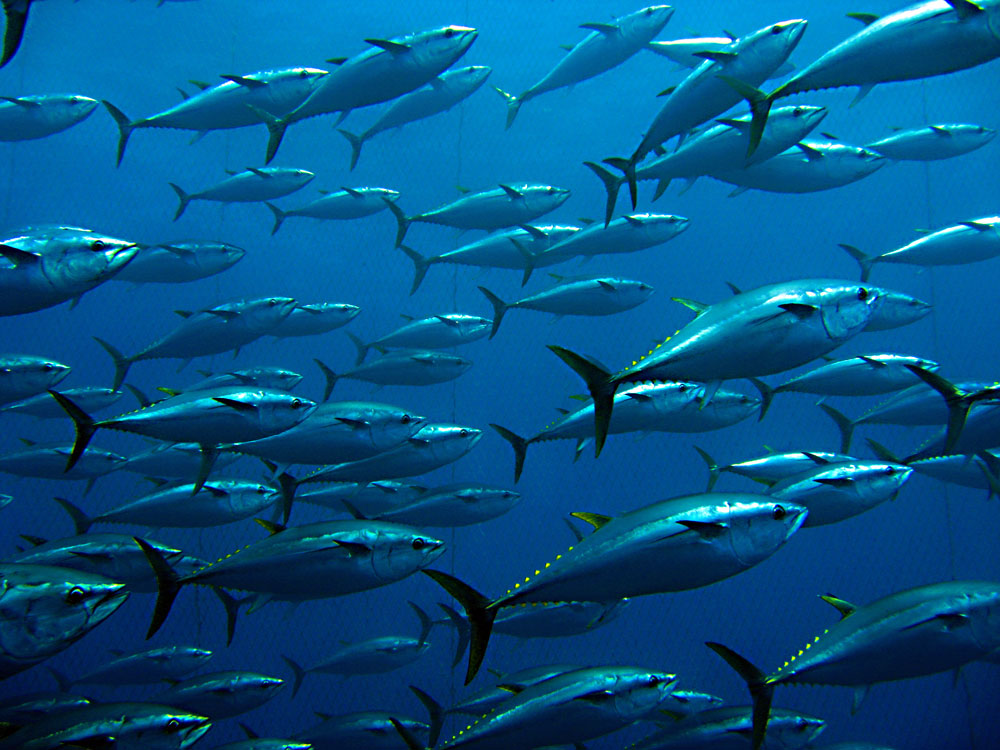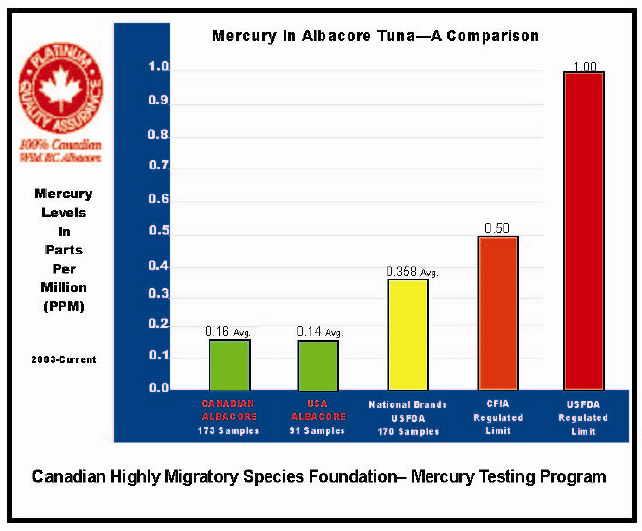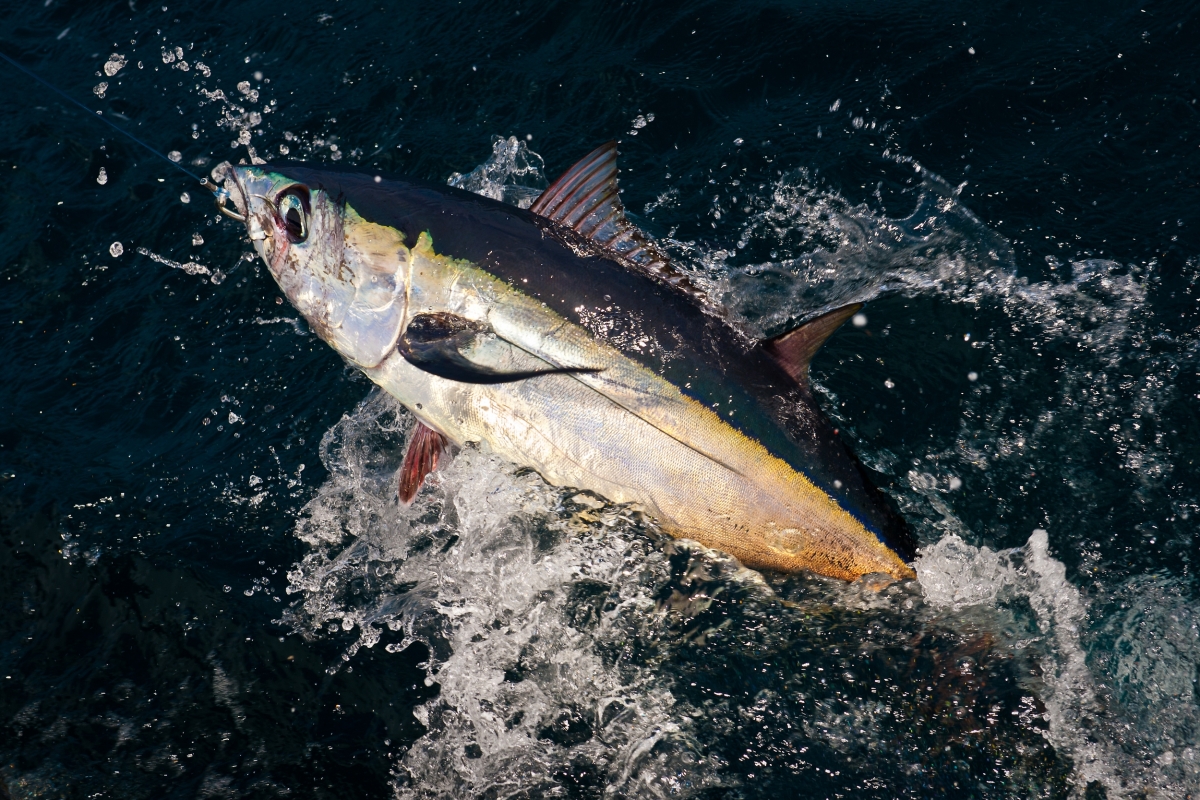SELENIUM is an element that is essential for many functions in our bodies. Specifically Selenium has been scientifically identified:
- To Foster Growth and Development
- As a powerful anti-oxidant with cancer prevention properties
- As essential for normal thyroid hormone and immune functioning
Recent studies also indicate that SELENIUM is especially important for the brain, heart, and our immune system health.
Compromised Selenium-dependent metabolic processes have been linked to congenital muscular dystrophy, autism, Alzheimer’s disease, Down syndrome, brain tumors, diabetes, liver diseases, and other conditions associated with increased oxidative stress or inflammation, such as rheumatoid arthritis, pancreatitis, asthma, and even obesity.
Ocean fish, primarily tuna, are among the richest sources of nutritional Selenium in our diet.
The SELENIUM – MERCURY CONNECTION
As it turns out there is a very high affinity between Mercury and Selenium. Wherever they exist together they chemically bind and neither the Mercury nor Selenium are then bio-available. The actual process is that selenium acts as an antidote and counteracts any mercury found in the food. AS LONG as the SELENIUM CONTENT is greater or equal to the MERCURY CONTENT
“Selenium is the key to understanding mercury exposure risks. Scientists discovered that if a body has sufficient selenium to maintain proper function, the risks from mercury are mitigated.” (NOAA, 2011).
There have been occasions where human populations have been exposed to mercury through fish consumption, for example in Minamata, Japan through the long-term dumping of toxic methyl-mercury. Understandably, therefore, people are concerned about “eating mercury.” In reality, the health risks of fish consumption vary with fish type and location.
As oceans are rich in Selenium, most ocean fish contain more moles of Selenium than of
mercury. And, therefore, the consumption of such fish provide a natural protection against
Mercury Toxicity, by virtue of their high Selenium Content.
The following graph from the National Oceanographic and Atmospheric Administration
(NOAA) shows the relative relationship between Selenium and Mercury in various fish
species. Note: that pretty much all ocean fish identified here, with the exception of Swordfish,
have excess Selenium to Mercury content so there is no detrimental effect to eating the fish.
In fact – eating ocean fish with high selenium will provide additional protection against other
organic-metal consumption exposure.

Interestingly enough the original concerns related to Mercury and Fish consumption were the result
of studies of expectant women consuming Pilot Whale Meat (a mammal not a fish) which contains
a Mercury content almost three times that of Selenium. Unfortunately, as a result, for more than
60 years, since that original study, many people have avoided ocean fish for fear of mercury exposure and, therefore, missing the protection that consumption would provide against organic-metals and such diseases as Alziemers, etc.
While the majority of ocean fish have the high levels of protecting Selenium, they are also packed with nutrients: omega-3s, vitamins, high-quality protein, and minerals. It is essential for our health that we understand the real risks of avoiding fish versus the potential risk of mercury exposure from eating fish.
Since ocean fish are excellent sources of selenium, they provide nutrients without repercussions from mercury exposure. Less is known about freshwater fish, and this has become an active area of research.
Where Are We Today?
Fortunately, even with the protection that Selenium content in ocean fish provides us as consumers the Albacore Tuna landed by the Canadian/British Columbian fishing fleet is caught primarily in the eastern Pacific regions along the west coast of North America ranging from Oregon to British Columbia which are naturally low in Mercury.
Results from our Studies, based on a total of 173 samples, conclude that the Average Level of Mercury in our North Pacific Albacore is 0.16 ppm. Results from a US study carried out by Dr. Morrissey, University of Oregon; conclude that the average level of Mercury in North Pacific Albacore is 0.14 based on a sample size of 91 fish.
The CHMSF plans to maintain its Mercury Testing Program along with program components including the use of long line only, barbless hooks, bleeding, temperature control, blast freezing at sea, etc., all of which combined, are significant components of the CHMSF PLATINUM QA PROGRAM. The CHMSF is pleased that our industry members are an integral part of the Mercury Testing Program and along with our colleagues in the US will maintain such programs.
What Others Are Saying About Canadian Albacore Tuna
HEALTH CANADA, after carrying out an extensive review of all data, has revised its standards on Mercury levels in fish including: Fresh and Frozen Tuna, Shark, Swordfish, Escolar, Marlin, and Orange Roughy. Previous regulation, first established in 1970, focused on canned fish and set the regulated limit at 0.5 parts per million. This regulation is not changed. The new regulation is established for Fresh and Frozen fish at a limit of 1 part per million (ppm).
There remains some concerns over other fish such as Marlin, Swordfish, Escolar, Orange Roughy, and other species of Tuna. As a result the BC Ministry of Health does recommend limits on the consumption of these species. There are also 3 fresh water lakes have the potential for chemical mercury contamination and as a result there are warning about eating trouts and other species from those lakes (See BC Ministry of Health website).
CONTROL – revised, and upgraded, their recommendations in 2011 related to limits for consumption http://www.healthlinkbc.ca/healthfiles/hfile68m.stm Stating:
“Fish is part of a healthy diet. Fish provides many nutrients such as protein, while being low in saturated fat. Fish also provides healthy omega-3 fats, which are good for your heart and brain. Omega-3 fats are important especially for the brain and eye development of babies and children. Eating Well with Canada’s Food Guide recommends at least 2 servings of fish each week for children 2 years of age and older and for adults. Choose Fish Low in Mercury. One Serving is equal to 75 g (2.5 oz.) or 125 mL (1/2 cup)
However after reviewing all of the data collected from our Canadian studies, and data from U.S. studies the BC Ministry of Health removed ALL LIMITS and warnings related to related to consumption of Albacore Tuna products caught in the CANADIAN fishery and labelled Product of Canada. Ie (from the BC Ministry of Health Website).
* Canned albacore tuna (labelled with ‘Product of Canada’) has no serving limits.
As an industry, we are pleased, and proud, that our Albacore Tuna has amongst the lowest mercury content of all Tunas. The fact that Albacore Tuna contains significant levels of Selenium, Omega-3 Fatty Acids, Protein, and other nutrients makes it a healthy and important component of our diets.







